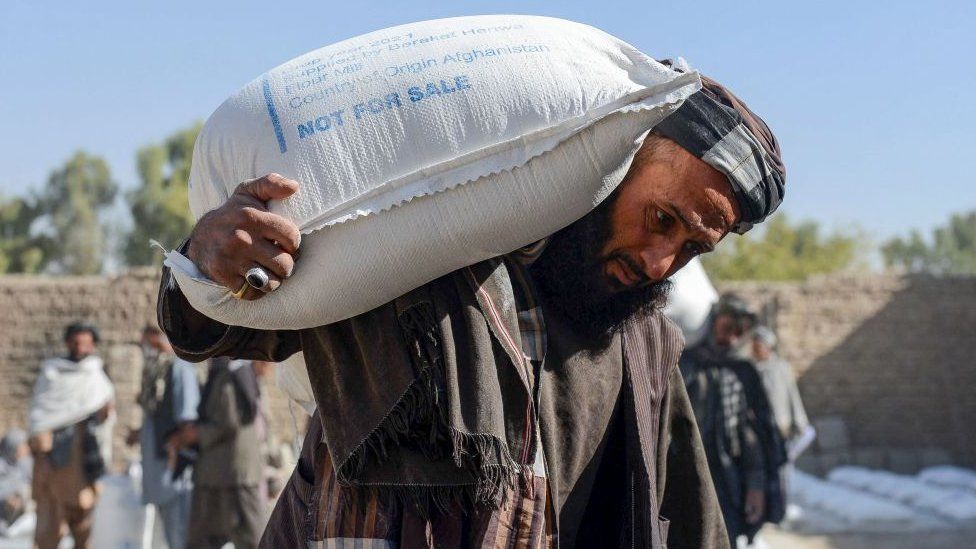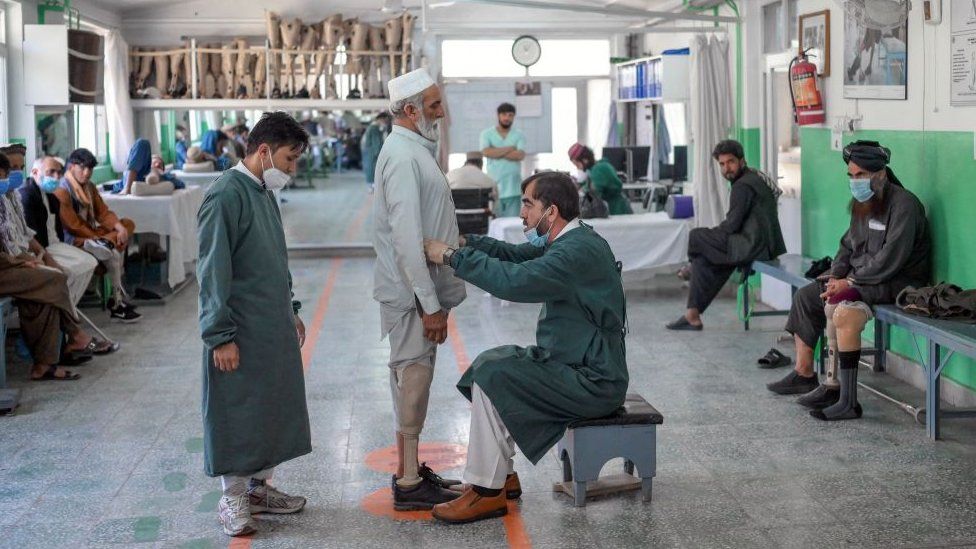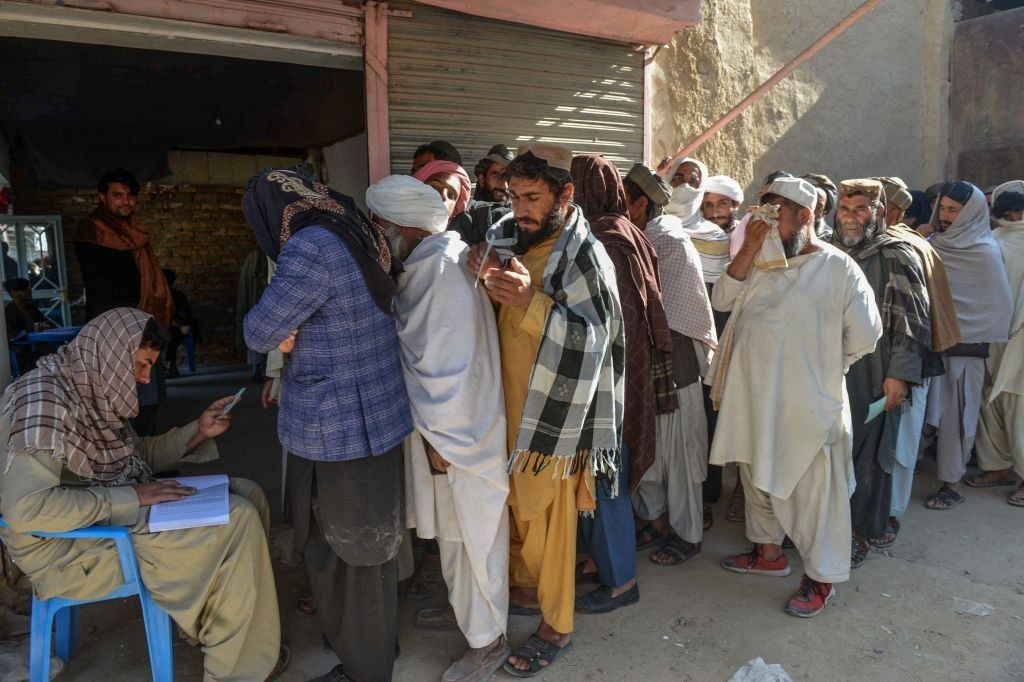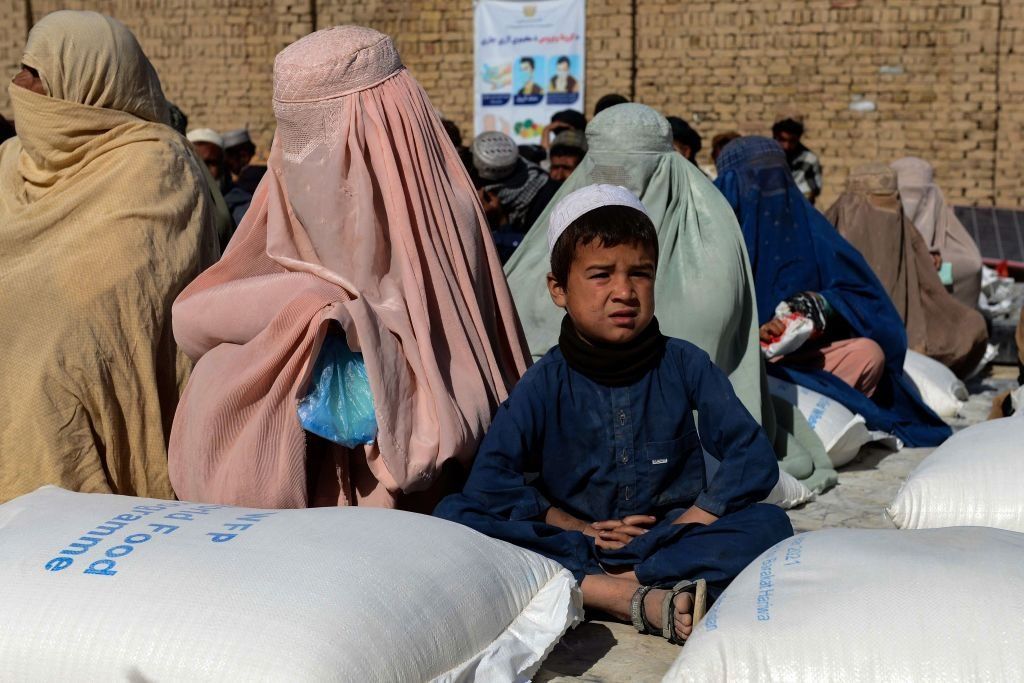ghazi52
PDF THINK TANK: ANALYST

- Joined
- Mar 21, 2007
- Messages
- 101,794
- Reaction score
- 106
- Country
- Location
What humanitarian aid is getting in?
By Shruti MenonBBC Reality Check

The worsening humanitarian situation in Afghanistan has left over 20 million people in need of assistance, the UN says.
Many countries suspended or significantly cut funding to Afghanistan after the Taliban takeover in August 2021.
Last month, the UN launched what it said was the "largest ever appeal" for a single country, asking for $4.4bn in funding.
Who is providing support?
Prior to the overthrown of the government last year about 80% of its budget came from external aid.However, most of this aid was suspended once the Taleban took power and financial assets (nearly $10bn) were frozen by foreign governments and institutions.
But humanitarian aid did continue to flow, and some foreign governments clarified that this support would be exempt from sanctions.
As of February, about $1.6bn (£1.36bn) has been provided to Afghanistan, according the UN Office for the Co-ordination of Humanitarian Assistance (UNOCHA).
And the US has consistently been the largest donor, followed by the European Union - although some countries in the EU, such as Germany, have provided additional funding.

In October 2021, the EU pledged a further $1bn in humanitarian aid.
And several other countries - including neighbouring Pakistan, India and China as well as Arab Gulf states - have sent some food and medical supplies through various aid agencies.
In December, international donors also agreed to transfer $280m from a frozen account to fund UN-run food and health services in Afghanistan, the World Bank says.
The US has said it is looking into releasing half of the $7bn in frozen Afghan assets in the US for humanitarian purposes, although the remainder would be kept back.
Overall funding remains a challenge, and aid agencies say sanctions exemptions and the limited release of some frozen funds do not address the issue of overall economic collapse.
"The humanitarian response cannot sustainably fill the massive gaps that have been left by the wider withdrawal of international support," Vicki Aken, of the International Rescue Committee (IRC) in Afghanistan, says.
"The need is widespread," Ms Aken says. "It would be difficult to say any province is not in need."

Medical assistance is being provided by the International Red Cross
How great are current needs?
David Miliband, president of the International Rescue Committee, told the BBC that nine million people (including a million children) in Afghanistan were now in a situation just short of outright famine.He says humanitarian aid won't have an impact unless the economy is able to function. "It's essential to get that economy going to give Afghan people a chance to feed themselves. "
The UN World Food Programme (WFP) warned last October that the situation in Afghanistan could become the world's worst humanitarian crisis.
It said nearly 23 million people would face acute food shortages.

Afghans across the country are relying on food aid distributions
According to UNOCHA, between September 2021 and January 2022:
- more than nine million people received food assistance
- water trucks reached more than 200,000 in drought-affected regions
- more than 276,000 children were treated for malnutrition
- 1.6 million people received medical support, with medicine and other supplies flown in by the World Health Organization
The UN High Commissioner for Refugees has also helped transporting supplies, including items to improve tent installation, to keep displaced Afghans warm in the winter months.
But humanitarian organisations say more of these supplies and services are needed.
"Whatever we provide is just a drop in the ocean," Ingy Sedky, from the International Committee of Red Cross (ICRC), says.
And 60% of health clinics assessed by the ICRC lack the capacity to deliver nutrition programmes Afghans need.

The World Food Programme has been delivering aid in Kandahar province
How is aid getting into Afghanistan?
Most aid continues to be sent by road - through Afghanistan's borders with Pakistan, Iran, Turkmenistan, Uzbekistan, Tajikistan and Kazakhstan.Despite restrictions on the movement of people across the country's borders, the UNOCHA says they have remained largely open to the flow of humanitarian aid.
There's only a limited commercial flight service to Kabul - but aid organisations and governments have been able to use air routes to send some emergency supplies.

Iran has been sending humanitarian aid to Afghans via land and air
Some food aid is also being sourced locally, the WFP says.
But major challenges remain in distributing aid within Afghanistan.
And the collapse of the country's banking system in August meant "access to cash was extremely challenging".
A recent report by the Norwegian Refugee Council said that difficulties in transferring funds into and within Afghanistan was hampering the humanitarian response.
UN Secretary-General Antonio Guterres has warned that Afghanistan is "hanging by a thread" and that ways need to be found urgently to inject cash into the economy.
